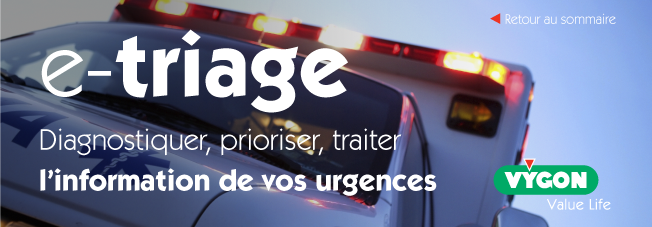Vu sur le web
Pulmonary Embolism in Syncope Italian Trial (PESIT)
New England Journal of Medicine
“Whenever there is the suspicion of PE, patients should be given therapeutic doses of an anticoagulant drug even before they undergo CT angiography or ventilation-perfusion lung scanning. This approach has the potential to dramatically reduce the risk of death in those in whom the vascular disorder has occurred.”
Blood transfusion guidelines « online October 12 in JAMA »
“The recommendation assigns two tiers of hemoglobin level transfusion triggers: 7 g/dL for hemodynamically stable adults, even those in critical care, and 8 g/dL for patients with preexisting cardiovascular disease or those undergoing cardiac or orthopedic surgery. The current hemoglobin threshold was 10 g/dL.If clinicians continue to adopt a restrictive transfusion strategy of 7 g/dL to 8 g/dL, the number of RBC transfusions would continue to decrease.”
Emergency Department Management of Suspected Calf-Vein Deep Venous Thrombosis
Western J Emerg Med. 2016;17(4):384-390
When IC-DVT is diagnosed, current references suggest that a decision between anticoagulation and continued follow-up outpatient testing can be based on shared decision-making. The risks of proximal progression and life-threatening embolization should be balanced against the generally more benign natural history of such thrombi, and an individual patient’s risk factors for both thrombus propagation and complications of anticoagulation.
NACIAM: N-Acetylcysteine Reduces Infarct Size
European Society of Cardiology
“Intravenous NAC administration was associated with more rapid chest-pain resolution, improved myocardial salvage, a favorable in-hospital safety profile, sustained infarct size reduction at 3 months post-STEMI, and promising clinical outcomes at 2 years.”
IV Amiodarone for Wide Complex Tachycardia: Time to Say Goodbye?
Ortiz M, et al; PROCAMIO Study Investigators. Randomized comparison of intravenous procainamide vs. intravenous amiodarone for the acute treatment of tolerated wide QRS tachycardia: the PROCAMIO study. Eur Heart J. 2016 Jun 28.
This study demonstrated that procainamide was more effective and safer than amiodarone for patients with WCT, including those with structural heart disease.
Fluid Resuscitation Management in Patients With Burns: Update
P. Guilabert; et al. Br J Anaesth. 2016;117(3):284-296.
The initial resuscitation fluid should be a balanced crystalloid. Colloids seem inappropriate during the first hours because of the patient’s increased capillary permeability. Ringer’s acetate seems to protect the electrolytic balance in large replacements, and it may be the crystalloid of choice for initial resuscitation in burn patients.
Although there are reports of poorer outcomes in septic patients with the use of HES, the current scientific evidence does not suffice to support a specific contraindication for HES use in burn patients. As was the practice in many burn units, we formerly used HES after the first 24 h when it was needed and we did not have the impression that outcomes were worse in our patients, but this is a subjective evaluation.
Gelatins have not shown superiority over crystalloids in their expansion capacity, and their safety is still uncertain.
Hypertonic solutions, albumin, and plasma have been associated with lower volume requirements for initial resuscitation, lower intra-abdominal pressure, and a lower incidence of compartment syndrome; hence, these solutions could have a place in burn resuscitation, but additional evidence is needed to support their use.





